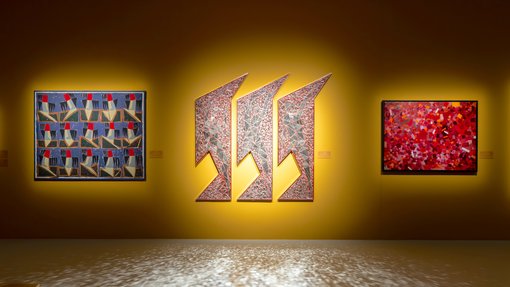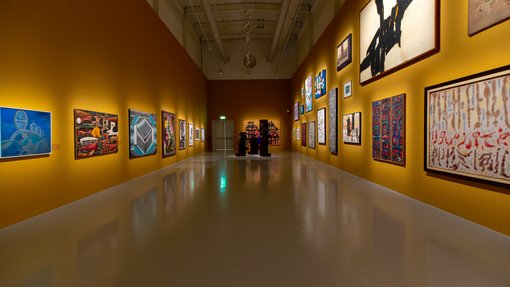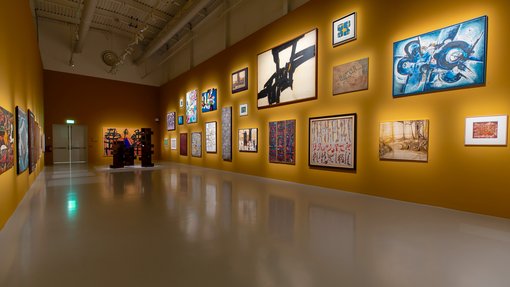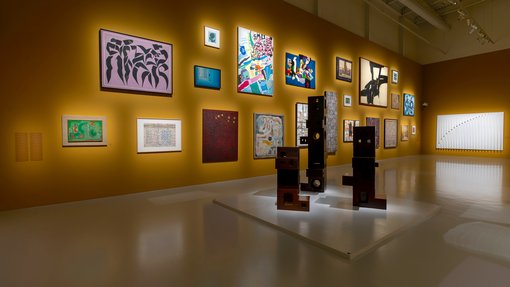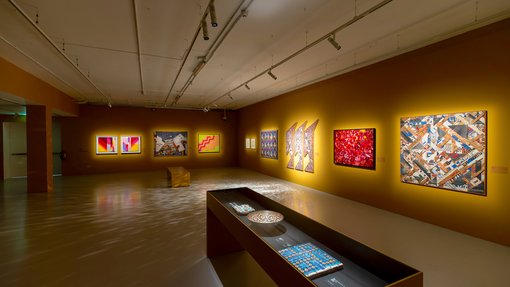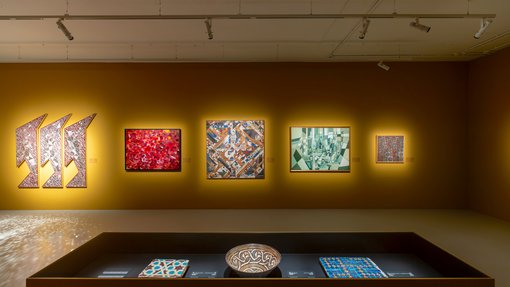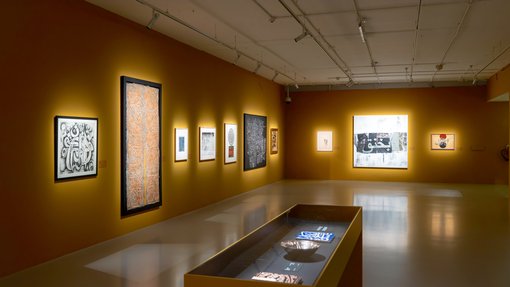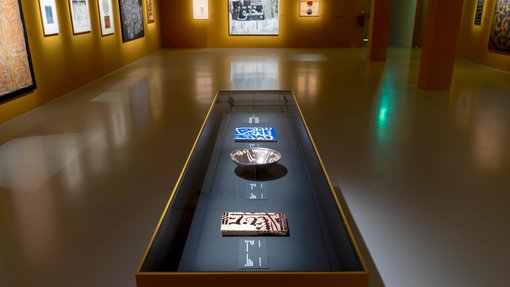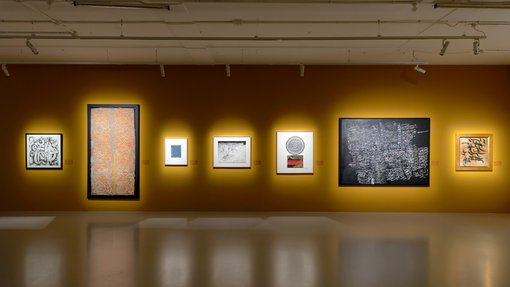Tajreed, the Arabic term for abstraction, means to strip away and purify. It also refers to a process of revealing and clarifying. Modern artists from West Asia and North Africa recognised the inherent abstraction of the Arabic language. Being neither figurative nor pictorial, Arabic presented itself as a system of geometric shapes that transcends the common visual syntax found in other parts of the world. Equally, artists’ interest in abstraction, whether Arabs or fellow modernists elsewhere, inadvertently brought their attention to what is known as Islamic art – leading them to incorporate traditional aesthetics into their contemporary production.
This exhibition examines how specific experiments in abstraction, those informed by the rich heritage of the Arab-Muslim world, have yielded works that distinguish Arab modernism from its counterparts around the globe. It highlights the ways in which regional artists have drawn new ideas, visual elements, and techniques from calligraphy and ornamental patterns in particular, thus devising a unique approach to abstraction. Notwithstanding individual practices, collective tendencies become evident – facilitated by shared linguistic and cultural foundations that continue to influence the artists’ work, and an awareness of a history of abstraction in the region that stretches far beyond the West’s more recent aversion to realistic depictions.
Featuring works drawn from Mathaf’s collection, the exhibition raises critical questions about conventional understandings of abstraction. Aside from contesting its provenance, abstraction here is viewed neither as an end in itself, nor merely through the lens of simplification or reduction. Instead, it is a way of tapping into unrealized potential, of discovering new expressive possibilities within the familiar. Abstraction, in other words, may be seen as a journey of intellectual inquiry, a means of arriving at distilled lessons.
